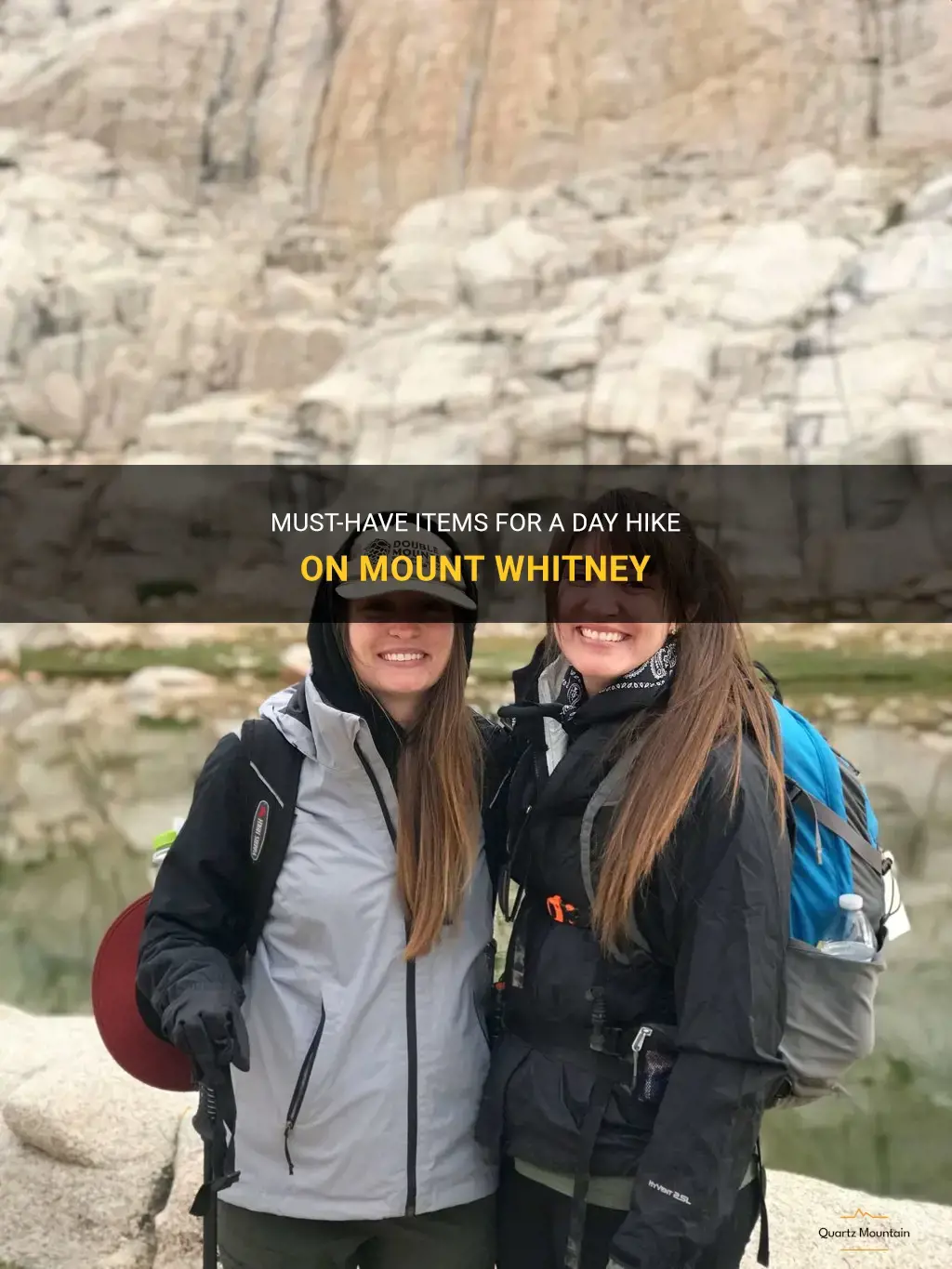
Mount Whitney is not only the tallest peak in the contiguous United States, but it is also one of the most beautiful and challenging hikes for outdoor enthusiasts. With its stunning views, rugged terrain, and unpredictable weather conditions, it's essential to be prepared with the right gear and supplies for a day hike on Mount Whitney. Whether you're a seasoned hiker or a novice adventurer, this list of must-have items will ensure that you have a safe and enjoyable experience on this iconic mountain.
| Characteristics | Values |
|---|---|
| Hiking Boots | Sturdy, waterproof, and comfortable |
| Backpack | Lightweight and durable with multiple compartments |
| Water Bottle | Insulated and leak-proof |
| Food and Snacks | High-energy and easy to eat on the go |
| Clothing | Layered clothing appropriate for changing weather conditions |
| Rain Gear | Waterproof jacket and pants |
| Hat and Sunglasses | Wide-brimmed hat and sunglasses with UV protection |
| Sunscreen | High SPF and water-resistant |
| Map and Compass | Topographic map and compass for navigation |
| First Aid Kit | Basic first aid supplies, including bandages and medications |
| Knife or Multi-tool | Handy tool for various tasks |
| Headlamp or Flashlight | With extra batteries |
| Trekking Poles | For added stability and support |
| Sun Protection | Lip balm with SPF, sun hat, and long-sleeved shirt |
| Whistle | Emergency signaling device |
| Cell Phone | With fully charged battery, in case of emergencies |
| Extra Clothing | Warm layers for colder conditions |
| Trash Bag | To pack out all trash and leave no trace |
What You'll Learn
- What essential items should I pack for a day hike to Mount Whitney?
- Are there any specific clothing or gear recommendations for a day hike on Mount Whitney?
- How much water should I bring for a day hike to Mount Whitney and are there any water sources along the trail?
- Are there any specific food or snacks that are recommended for a day hike on Mount Whitney?
- Are there any permits or regulations I need to be aware of when planning a day hike to Mount Whitney?

What essential items should I pack for a day hike to Mount Whitney?
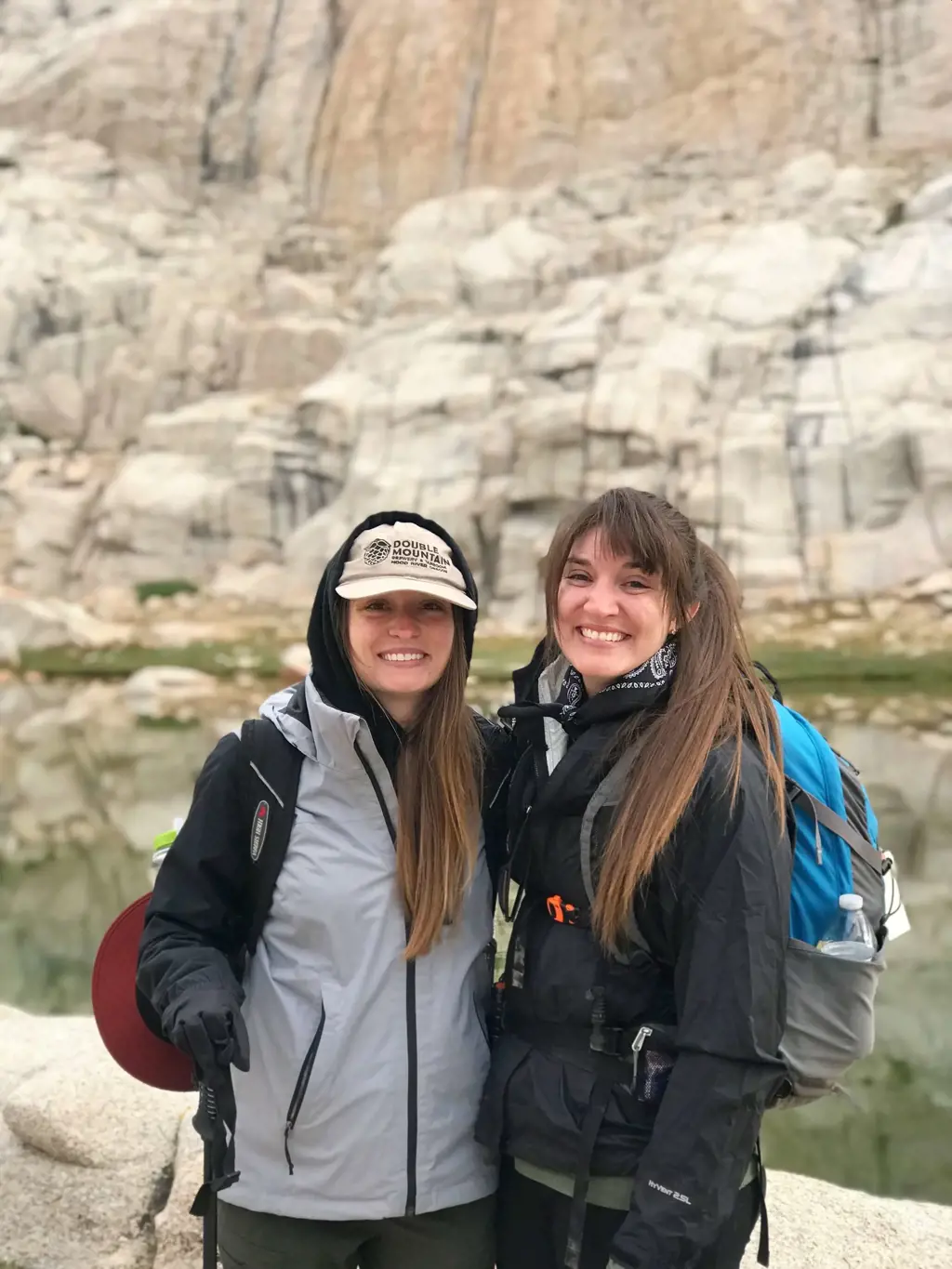
When planning a day hike to Mount Whitney, it is essential to pack the right items to ensure a safe and enjoyable experience. Mount Whitney, located in the Eastern Sierra Nevada Mountains of California, stands at 14,505 feet (4,421 meters) and is the highest peak in the contiguous United States. Here are some essential items to include in your day hike to Mount Whitney:
- Proper footwear: Choose comfortable hiking boots with ankle support to protect your feet from rough terrain. Make sure to break-in your boots before the hike to avoid blisters and discomfort.
- Clothing layers: Dress in layers to manage changing weather conditions. Start with a moisture-wicking base layer that will keep you dry. Add a fleece or down jacket for insulation and a waterproof, breathable outer layer to protect against wind and rain. Bring extra warm clothing in case the weather changes drastically.
- Navigation tools: Carry a detailed trail map, compass, and/or GPS device to ensure you stay on track. Familiarize yourself with the trail and have a clear understanding of the route before starting your hike. Be cautious of any trail markers or signs along the way.
- Adequate food and water: Pack enough food and snacks to provide energy throughout the day. Choose lightweight, non-perishable options such as energy bars, dried fruits, and nuts. Carry at least 2 liters of water per person and consider a water filtration system in case you need to refill along the trail.
- Sun protection: Protect your skin from the sun's harmful rays by wearing a wide-brimmed hat, sunglasses, and sunscreen. The high altitude and reflective snow can intensify sunburn, so it's important to reapply sunscreen regularly.
- Emergency kit: Prepare a basic first aid kit with bandages, antiseptic ointment, blister treatment, and any necessary medication. Include a whistle, signal mirror, and flashlight in case of emergencies. It's always a good idea to have a fully charged mobile phone as well.
- Trekking poles: Consider bringing trekking poles to provide stability and reduce strain on your knees during the steep sections of the trail. They can also be helpful for crossing streams and navigating rocky terrain.
- Proper backpack: Choose a comfortable backpack with enough capacity to fit all your essentials. Ensure it has a waist belt and adjustable straps for proper weight distribution. Pack your belongings in waterproof bags or use dry bags to protect them from rain or snow.
- Communication devices: It's important to have a way to communicate in case of emergencies. Carry a fully charged mobile phone and consider a satellite communication device for more remote areas where cell service may be unreliable.
- Knowledge and experience: Before attempting a day hike to Mount Whitney or any other challenging trail, make sure you have the necessary knowledge and experience to navigate the terrain. Be aware of the current weather conditions, avalanche risks, and any potential hazards along the way. It's always wise to hike with a partner or join a guided hike if you are not confident in your abilities.
Remember, it's better to overpack and be prepared than to be caught unprepared on the mountain. Always prioritize safety and follow Leave No Trace principles by leaving the trail as you found it. With the right preparation and gear, a day hike to Mount Whitney can be a memorable and rewarding experience.
Essential Items to Pack for a Field Trip
You may want to see also

Are there any specific clothing or gear recommendations for a day hike on Mount Whitney?
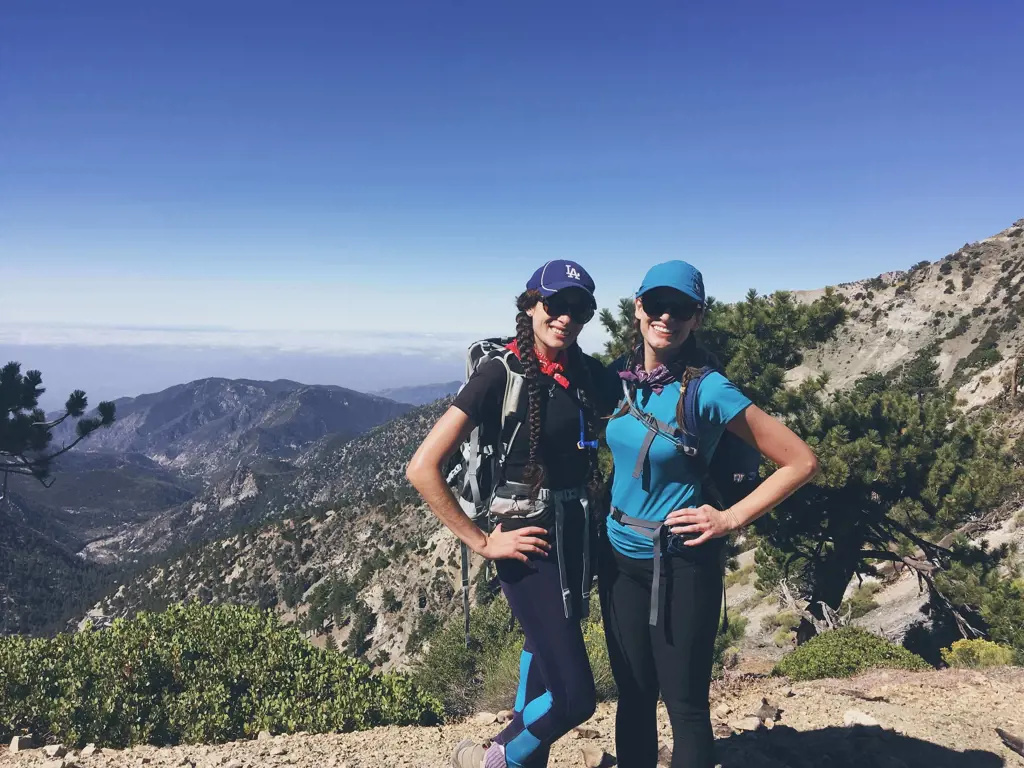
Mount Whitney is the tallest mountain in the contiguous United States, standing at 14,505 feet. It offers breathtaking views and a challenging hiking experience for those willing to take on the adventure. If you are planning a day hike on Mount Whitney, it is important to be prepared with the right clothing and gear for a safe and enjoyable experience.
Clothing Recommendations:
- Layered Clothing: Weather conditions can change rapidly on Mount Whitney, so it is essential to dress in layers. Start with a moisture-wicking base layer that will keep you dry and comfortable. Follow it with a thermal mid-layer for insulation, and top it off with a waterproof and windproof outer layer to protect against the elements.
- Hiking Boots: Invest in a good pair of hiking boots that provide ankle support and have a sturdy sole for traction on rocky terrain. Make sure they are well broken-in before attempting the hike to prevent blisters and discomfort.
- Moisture-Wicking Socks: Wearing moisture-wicking socks is crucial to keep your feet dry and prevent blisters. Choose socks made of a synthetic material like merino wool or polyester.
- Hat and Sunglasses: Protect yourself from the sun's rays by wearing a hat with a wide brim to shade your face and neck. Additionally, wear sunglasses with UV protection to shield your eyes from the glare at higher altitudes.
- Gloves: It is essential to have a pair of lightweight gloves to keep your fingers warm and protected from wind chill.
Gear Recommendations:
- Backpack: Choose a backpack that is comfortable and large enough to carry all your essentials, including water, food, extra layers, a first aid kit, a map, and a compass. Make sure it has a sturdy waist belt and adjustable straps for a proper fit.
- Navigation Tools: It is crucial to carry a map and compass or a GPS device to navigate the trails on Mount Whitney. Familiarize yourself with the route beforehand for added safety.
- Water and Food: Mount Whitney is a strenuous hike, and it is vital to stay hydrated and well-nourished. Carry at least two liters of water per person and pack high-energy snacks and meals for the hike.
- Sunscreen and Insect Repellent: Protect your skin from harmful UV rays by applying sunscreen with a high SPF. Additionally, use insect repellent to ward off bugs that may be present at lower elevations.
- Trekking Poles: Consider using trekking poles to provide stability and reduce the strain on your knees and joints during the hike. They can be particularly helpful on steep ascents and descents.
It is also crucial to check the weather conditions before heading out for your day hike on Mount Whitney. If there is a chance of thunderstorms or extreme weather, it may be best to postpone your hike for another day. Always prioritize safety and be prepared for any situation.
In conclusion, wearing the right clothing and having the proper gear is essential for a successful day hike on Mount Whitney. Dress in layers, wear appropriate footwear, and protect yourself from the sun and wind. Carry a well-stocked backpack with navigation tools, food, water, and other essentials. By being prepared, you can fully enjoy the stunning beauty of Mount Whitney while staying safe on the trail.
Essential Items to Pack for a School Trip to France
You may want to see also

How much water should I bring for a day hike to Mount Whitney and are there any water sources along the trail?
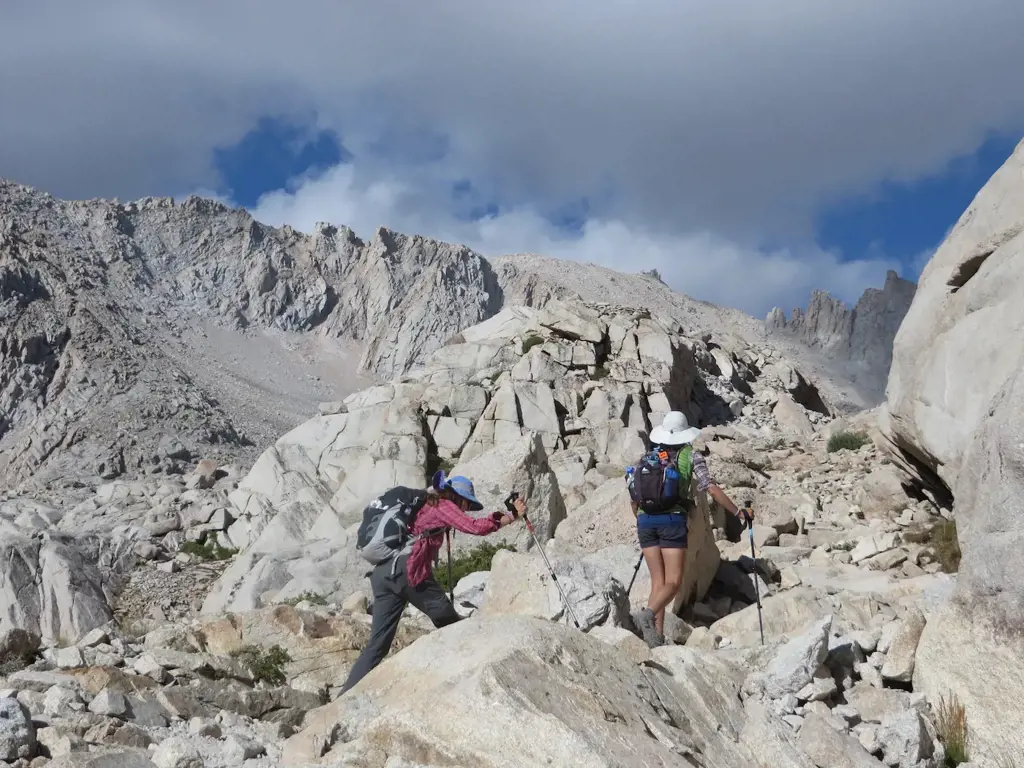
When planning a day hike to Mount Whitney, it is crucial to consider the amount of water you should bring and the availability of water sources along the trail. Proper hydration is essential for a safe and enjoyable hiking experience, especially in high altitude environments. In this article, we will discuss how much water to bring for a day hike to Mount Whitney and explore the water sources you may encounter along the way.
Mount Whitney, located in the Sierra Nevada Mountains of California, is the highest peak in the contiguous United States. The ascent to its summit is a popular challenge for hikers, but the high altitude and strenuous nature of the trail require careful planning, including water management.
Generally, it is recommended to bring at least one gallon (equivalent to 3.78 liters) of water per person for a day hike to Mount Whitney. This amount may vary depending on factors such as personal hydration needs, weather conditions, and the distance you plan to cover. The hike to the summit and back can take anywhere from 12 to 18 hours, so it is vital to ensure you have enough water to stay hydrated throughout the duration of your trip.
Along the Mount Whitney trail, there are a few water sources that hikers can utilize to refill their water supplies. However, it is crucial to note that the availability of these sources can vary depending on the time of year and weather conditions. It is essential to research and plan accordingly.
The first significant water source is Lone Pine Creek, located at approximately two miles into the trail. This creek is fed by snowmelt and can provide a source of freshwater during the early summer months. However, it is advised to filter or treat the water before consumption to avoid any potential contaminants.
Another water source can be found at the Outpost Camp area, which is around 3.8 miles into the trail. Here, hikers can access a reliable water supply from the creek. Again, it is recommended to treat or filter the water before drinking.
The final water source before reaching the summit is Consultation Lake, approximately 11 miles into the trail. This lake is a reliable source of freshwater and offers a picturesque resting spot for hikers. Ensure you have the necessary equipment to filter or treat the water if you plan to refill your containers here.
It is essential to note that relying solely on these water sources may not always be possible, especially during late summer months when snowmelt is scarce. Therefore, it is crucial to carry enough water to sustain yourself throughout the hike, even if you plan to fill up at these sources.
In addition to water sources, it is worth considering other methods to ensure proper hydration during your hike. Carrying electrolyte-rich drinks or water purification tablets can help replenish essential nutrients and ensure safe drinking water, especially if you encounter an unexpected water shortage.
To summarize, when planning a day hike to Mount Whitney, it is recommended to bring at least one gallon of water per person. While there are some water sources along the trail, their availability can vary, and it is crucial to treat or filter the water before consumption. Being prepared and carrying enough water is essential for a safe and enjoyable hiking experience on Mount Whitney.
Essential Items to Pack for an Induced Labor
You may want to see also

Are there any specific food or snacks that are recommended for a day hike on Mount Whitney?
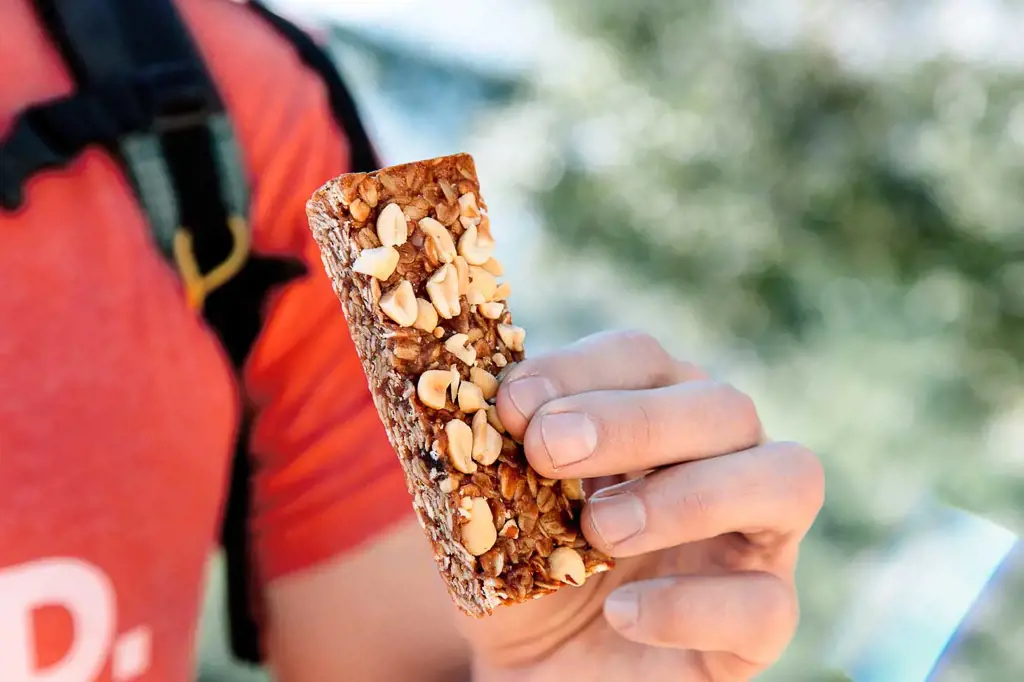
When embarking on a day hike on Mount Whitney, it is important to fuel your body properly to ensure you have the energy and nutrients you need to complete the trek. Hiking at high altitudes can be physically demanding, so choosing the right foods can make a significant difference in your overall experience and performance. Here are some recommended food and snack options to consider for your Mount Whitney day hike.
- High-Protein Foods: Opt for protein-rich foods to provide your muscles with the necessary nutrients for endurance and strength. Good options include nuts, seeds, lean meats, tofu, and legumes. These foods will help repair muscle tissues and keep you feeling full for longer periods.
- Complex Carbohydrates: Carbohydrates are essential for energy, especially when engaging in strenuous activities like hiking. Choose complex carbohydrates, such as whole grains, fruits, and vegetables. These foods release energy slowly, providing you with a steady source of fuel throughout your hike.
- Hydration: Staying hydrated is crucial for a successful day hike. Aim to drink at least 2 liters of water before starting your hike and bring a water bottle or hydration bladder to refill along the way. In addition to water, consider packing electrolyte-rich drinks or sports drinks to replenish minerals lost through sweat.
- Energy Bars and Snacks: Pack lightweight, nutrient-dense snacks like energy bars, trail mix, and dried fruits. These snacks are easy to carry and provide a quick boost of energy. Look for options that are high in calories, as you will be burning a significant amount of energy during your hike.
- Smart Salty Snacks: Sweating during a hike will cause you to lose electrolytes, so it's important to replace them. Pack salty snacks like pretzels, nuts, or jerky, which will help replenish sodium lost through sweat. These snacks also provide a crunchy texture, which can be satisfying during a long hike.
- Fresh Fruits and Vegetables: Fresh fruits and vegetables are excellent sources of vitamins, minerals, and antioxidants. Consider packing lightweight options like apples, oranges, bell peppers, or baby carrots. These nutritious snacks will not only keep you hydrated but also provide a refreshing and healthy option during your hike.
- Sandwiches or Wraps: Sandwiches or wraps made with whole grain bread or tortillas are a convenient and customizable option for a day hike. Fill them with lean protein sources, vegetables, and healthy spreads like hummus or avocado. They provide a satiating meal and are easy to eat on the go.
It's important to note that everyone's dietary needs and preferences are unique. Consider your personal taste preferences, dietary restrictions, and any food allergies when selecting the right snacks and meals for your Mount Whitney day hike. Additionally, it's essential to plan and pack enough food to sustain you throughout the entire hike, as there may not be many food options available once you're on the trail.
In summary, fueling your body properly for a day hike on Mount Whitney is crucial. Choose high-protein foods, complex carbohydrates, and don't forget to stay hydrated. Pack lightweight, energy-dense snacks like energy bars, trail mix, and dried fruits. Include smart salty snacks, fresh fruits, and vegetables for a well-rounded and nutritious hike. Lastly, customize your meals and snacks to suit your dietary needs and preferences. With the right foods, you'll have the energy and sustenance required to conquer Mount Whitney.
The Essential Tools for Starting a Cub Scout Pack
You may want to see also

Are there any permits or regulations I need to be aware of when planning a day hike to Mount Whitney?
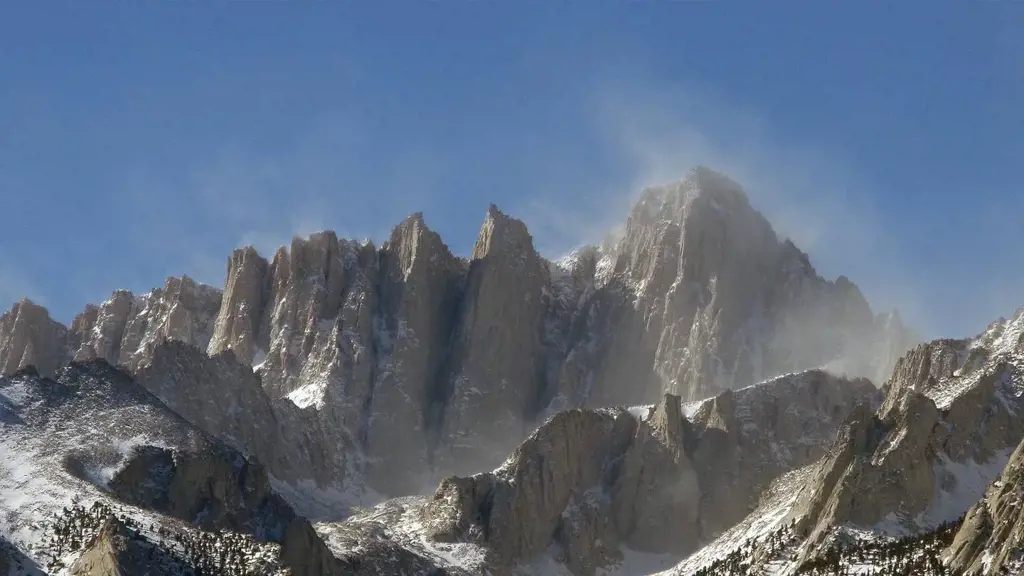
Mount Whitney, located in the Sierra Nevada range in California, is the highest peak in the contiguous United States. With its stunning views and challenging terrain, it is a popular destination for hikers and outdoor enthusiasts. However, if you are planning a day hike to Mount Whitney, there are several permits and regulations you need to be aware of to ensure a safe and enjoyable experience.
Permits:
Obtaining a permit is the first and most important step when planning a day hike to Mount Whitney. The number of hikers allowed on the trail is limited to protect the fragile ecosystem and preserve the wilderness experience. There are two types of permits available:
- Day Use Permits: These permits allow you to hike to the summit of Mount Whitney and return on the same day. The number of day use permits is limited to 100 per day, with 60 available through the online lottery system and the remaining 40 available on a first-come, first-served basis.
- Overnight Permits: If you plan to camp overnight on the mountain, you will need an overnight permit. These permits are also limited, with 60% of the permits available through the online lottery system and the remaining 40% available on a first-come, first-served basis.
To increase your chances of obtaining a permit, it is recommended to apply for the lottery as early as possible. You can apply for both day use and overnight permits through the Inyo National Forest website.
Regulations:
In addition to obtaining a permit, there are several regulations you need to follow when hiking Mount Whitney:
- Wilderness Regulations: Mount Whitney is located within the John Muir Wilderness, and all hikers must adhere to wilderness regulations. These regulations include packing out all trash, camping at designated sites, and practicing Leave No Trace principles.
- Campfire Restrictions: Due to the high fire danger in the area, campfires are prohibited above 10,400 feet. It is important to bring a camp stove for cooking and heating purposes.
- Human Waste Disposal: Proper disposal of human waste is crucial to protect the environment. You must bring a portable toilet system or use Wag Bags, which are provided at various locations along the trail.
- Bear Canister Requirement: To prevent bear encounters and protect your food, all hikers are required to carry a bear-resistant food storage canister. These canisters can be rented from the Lone Pine Visitor Center or other local outfitters.
- Mountaineering Skills: Hiking Mount Whitney involves navigating steep and rocky terrain, and it is important to have basic mountaineering skills. Familiarize yourself with proper navigation techniques and carry essential gear such as a map, compass, and GPS device.
Examples:
To better understand the permit and regulation process, let's consider an example. John is a hiker from Los Angeles who wants to hike Mount Whitney as a day trip. He applies for a day use permit through the online lottery system and is lucky enough to secure a permit for his desired date. He carefully reads the regulations and prepares accordingly, packing out all his trash, bringing a camp stove, and carrying a bear canister.
On the day of the hike, John starts early in the morning to allow enough time for the challenging ascent. He follows the marked trail, uses his map and compass for navigation, and takes breaks at designated areas to rest and enjoy the scenery. After reaching the summit, he takes some time to soak in the panoramic views before making his way back down the mountain. John follows Leave No Trace principles and returns safely, leaving only footprints behind.
In conclusion, when planning a day hike to Mount Whitney, it is essential to obtain the proper permits and adhere to the regulations set in place. By following these guidelines, you can ensure a safe and enjoyable experience while preserving the natural beauty of this iconic mountain.
Essential Items to Pack for a Trip to Fiji
You may want to see also
Frequently asked questions
For a day hike on Mount Whitney, it is important to pack essential items that will ensure your safety and comfort. These include a well-fitted backpack, plenty of water (at least 2 liters per person), high-energy snacks, a map and compass, a first aid kit, sunscreen, a hat, sunglasses, a lightweight jacket, extra layers of clothing, sturdy hiking boots, trekking poles, and a camera to capture the stunning views. It is important to be prepared for changing weather conditions, so make sure to check the forecast before your hike and adjust your clothing accordingly.
While a day hike on Mount Whitney does not require any special gear, it is important to have certain items to ensure your safety and comfort. Sturdy hiking boots with good traction are essential, as the terrain can be steep and rocky. Trekking poles can also be helpful for added stability on the trail. Additionally, it is important to bring a well-fitted backpack to carry your belongings and distribute the weight evenly. It is also advisable to bring a lightweight jacket and extra layers of clothing, as temperatures can fluctuate and weather conditions can change quickly in the mountains.
Proper hydration and fueling are crucial for a day hike on Mount Whitney. It is recommended to bring at least 2 liters of water per person to stay hydrated throughout the hike. High-energy snacks, such as trail mix, granola bars, or fresh fruit, should also be packed to provide sustained energy. It is important to eat and drink regularly to maintain your energy levels and prevent dehydration. It is always better to pack more food and water than you think you will need, as you may encounter unforeseen circumstances or longer hike times than anticipated. Remember to pack out all trash to leave the trail clean and protect the environment.







